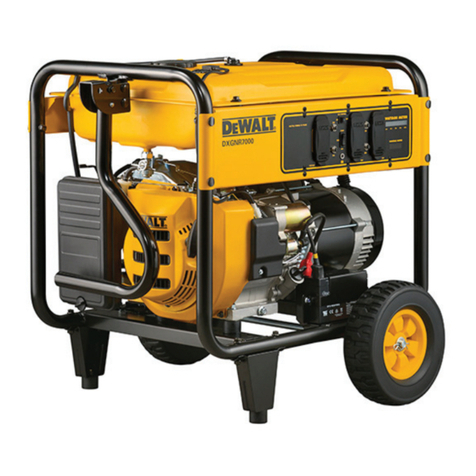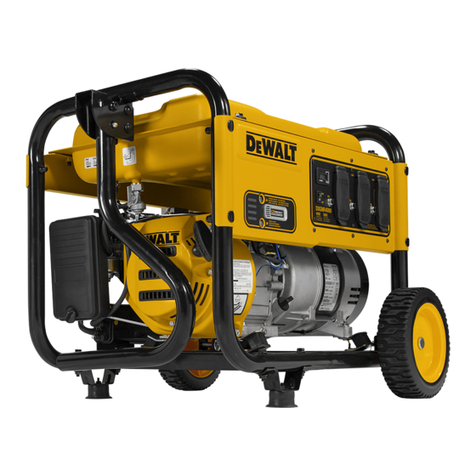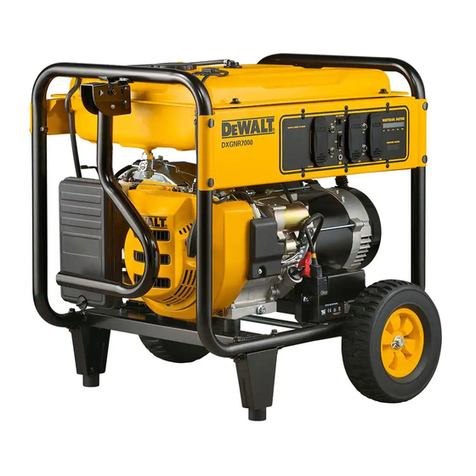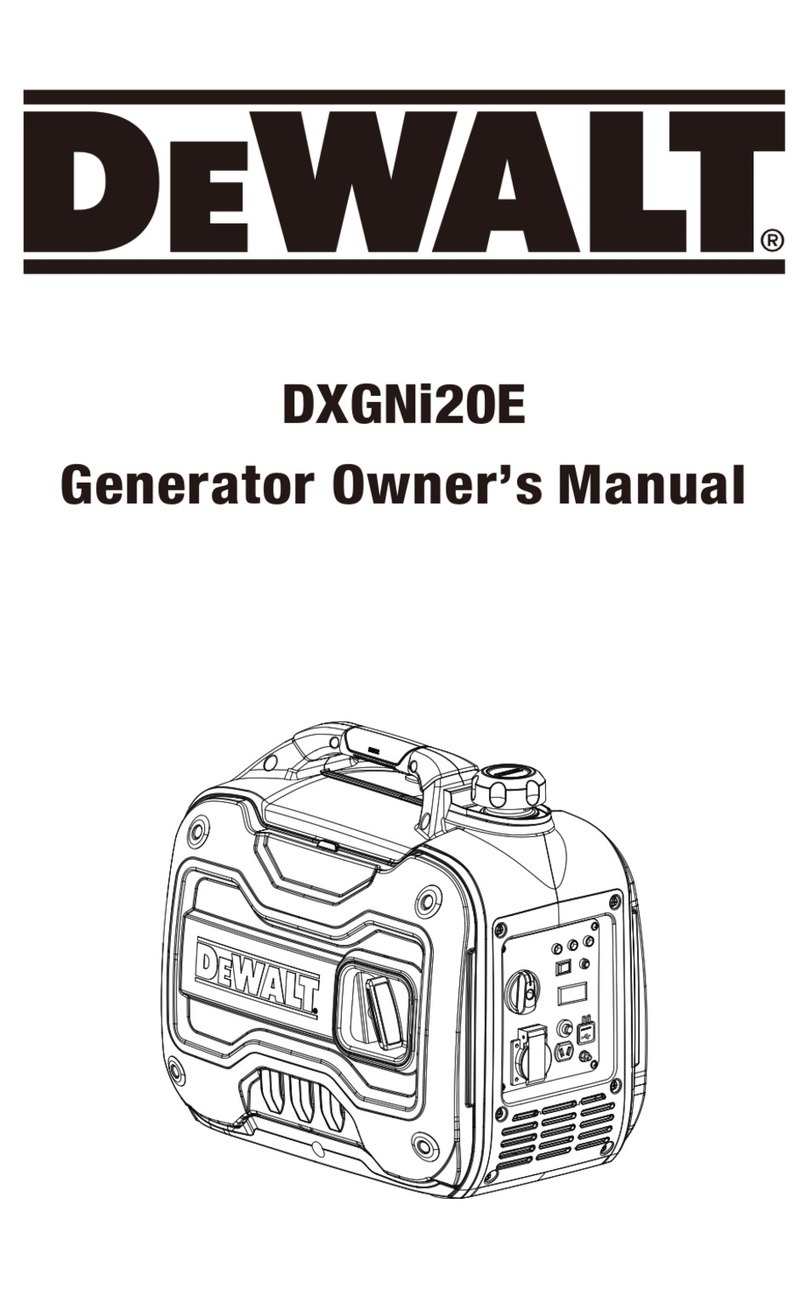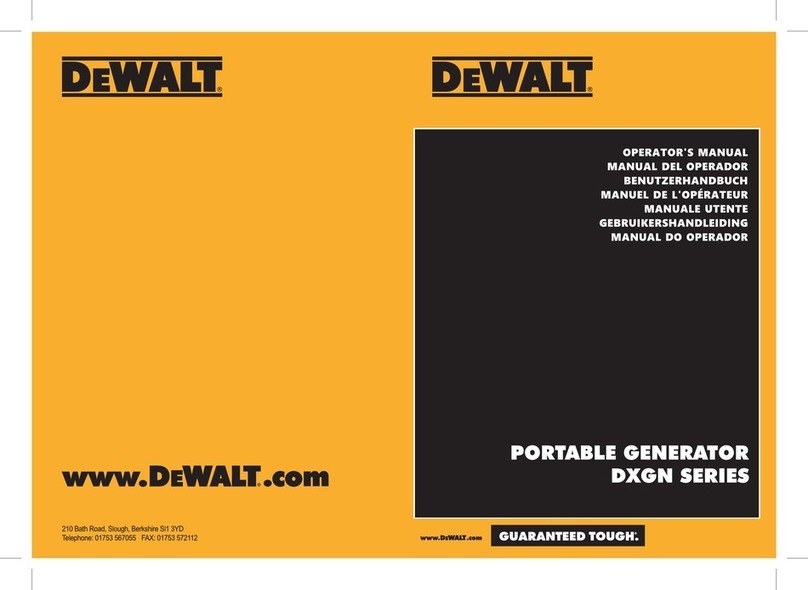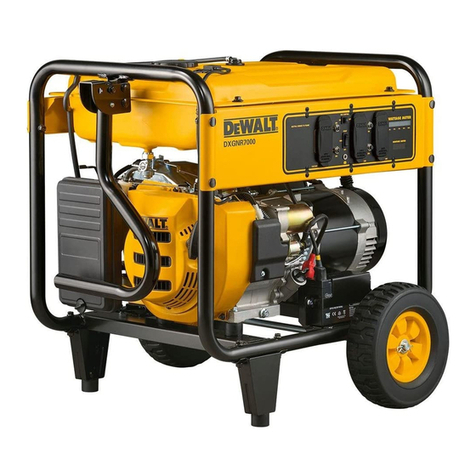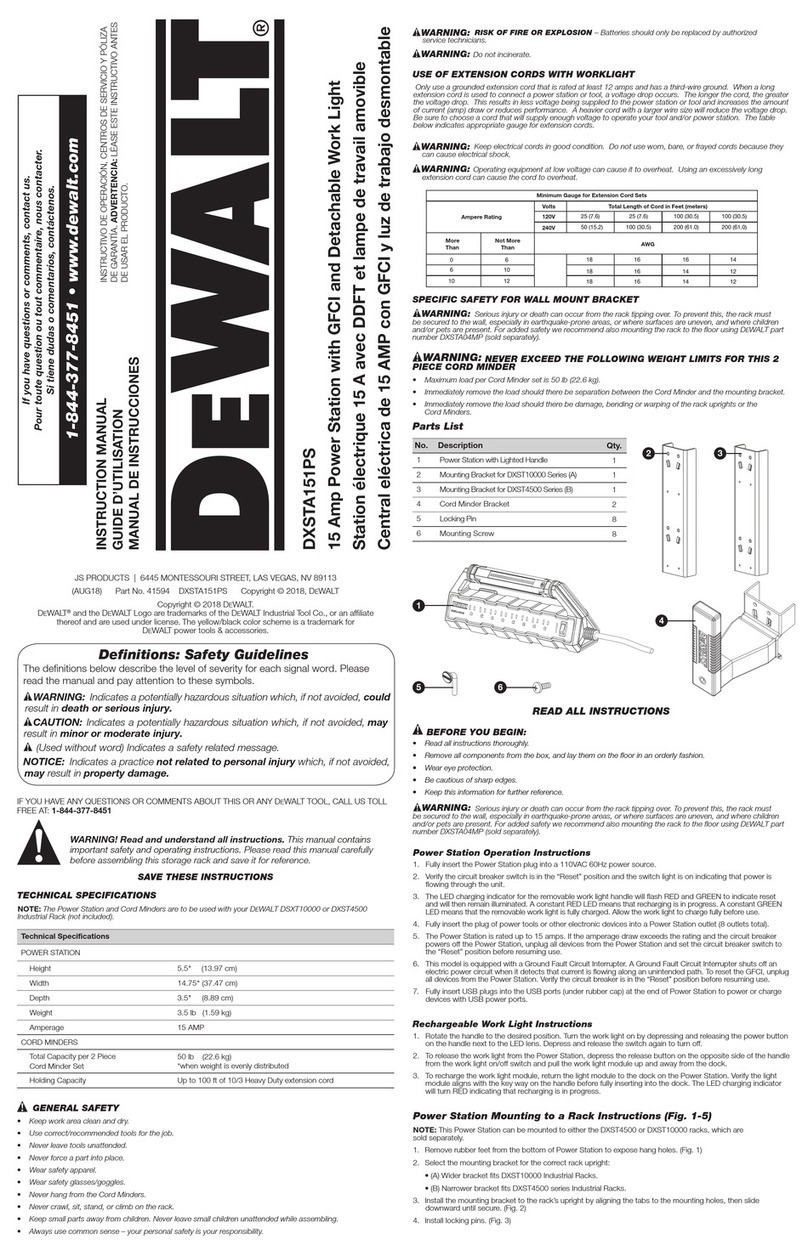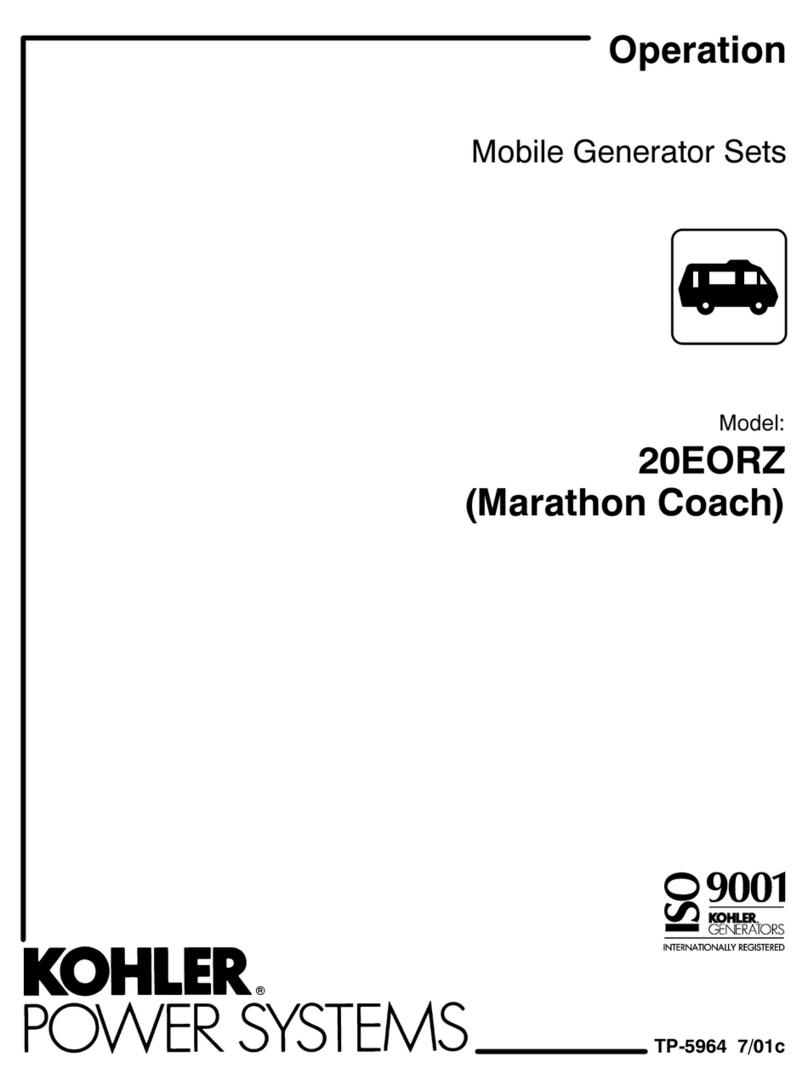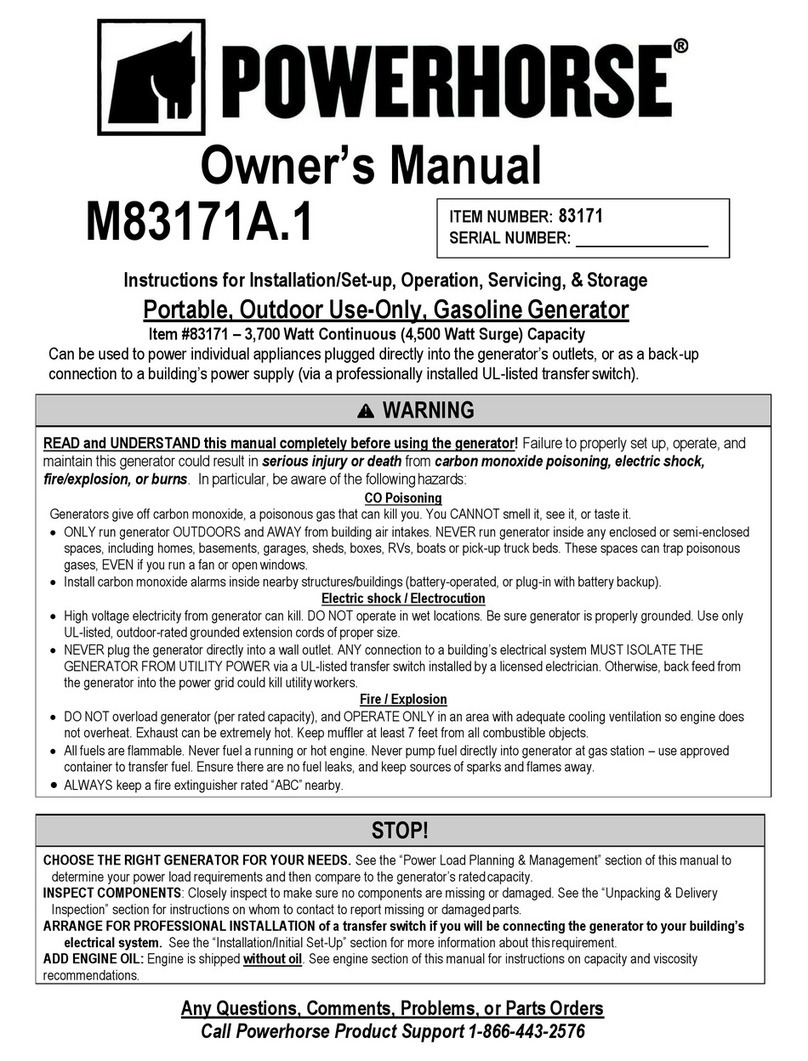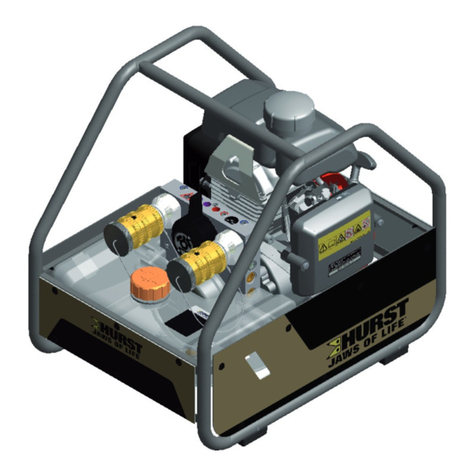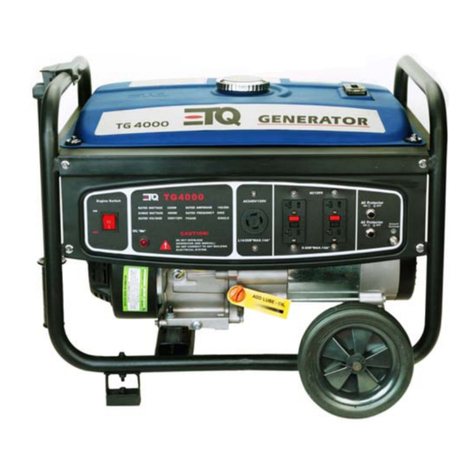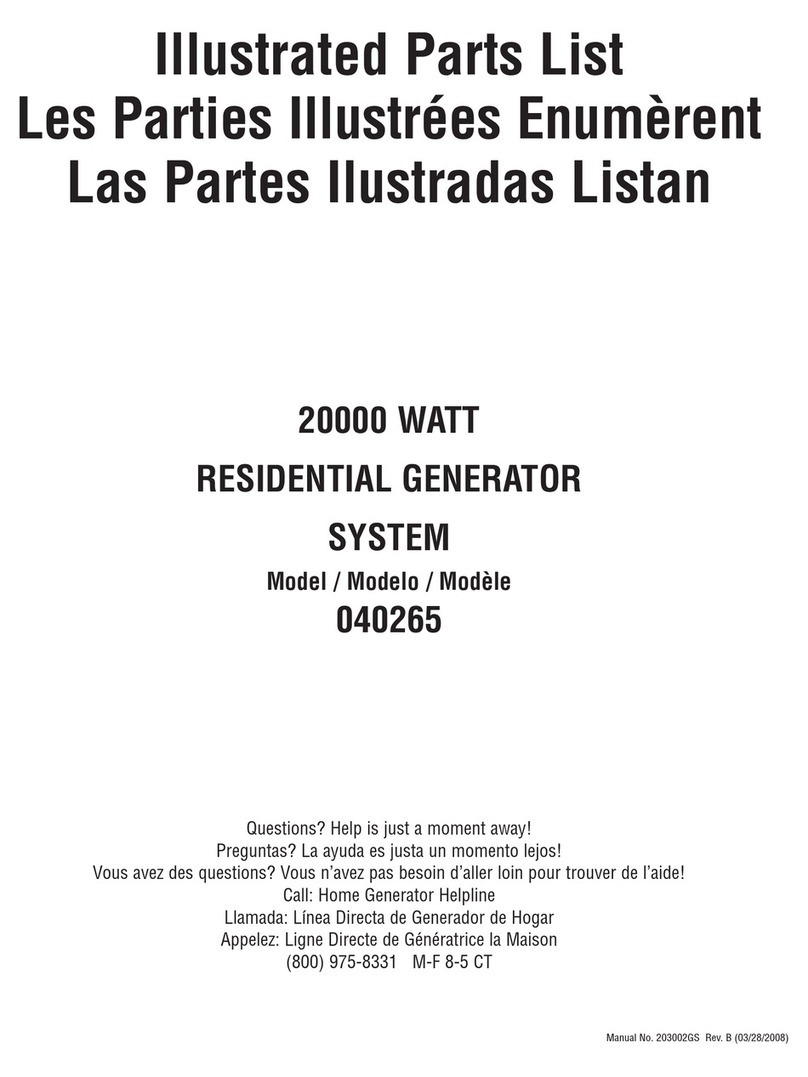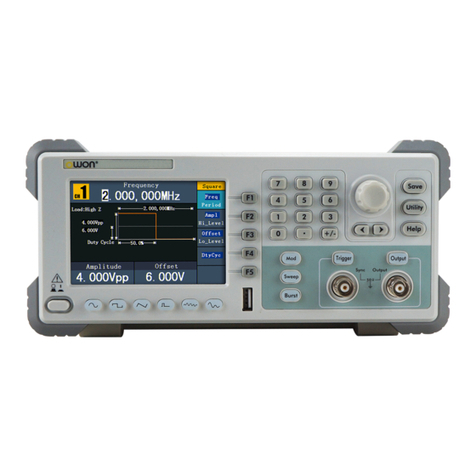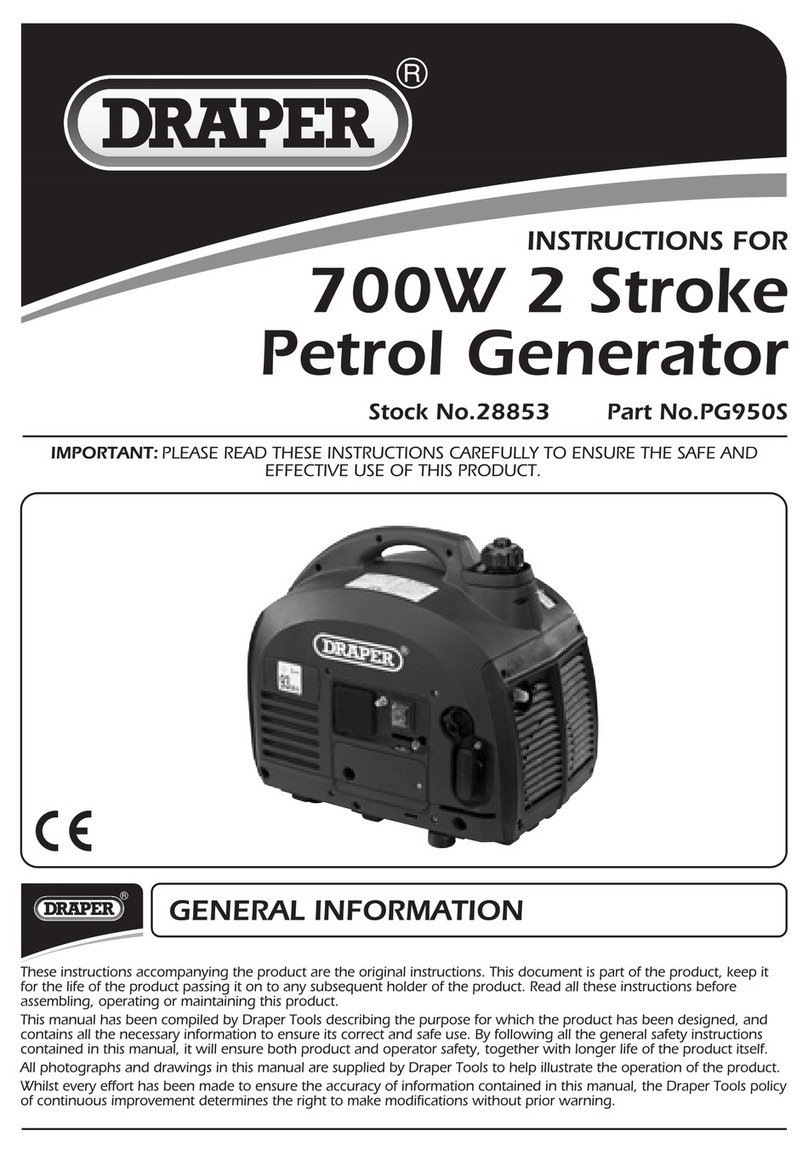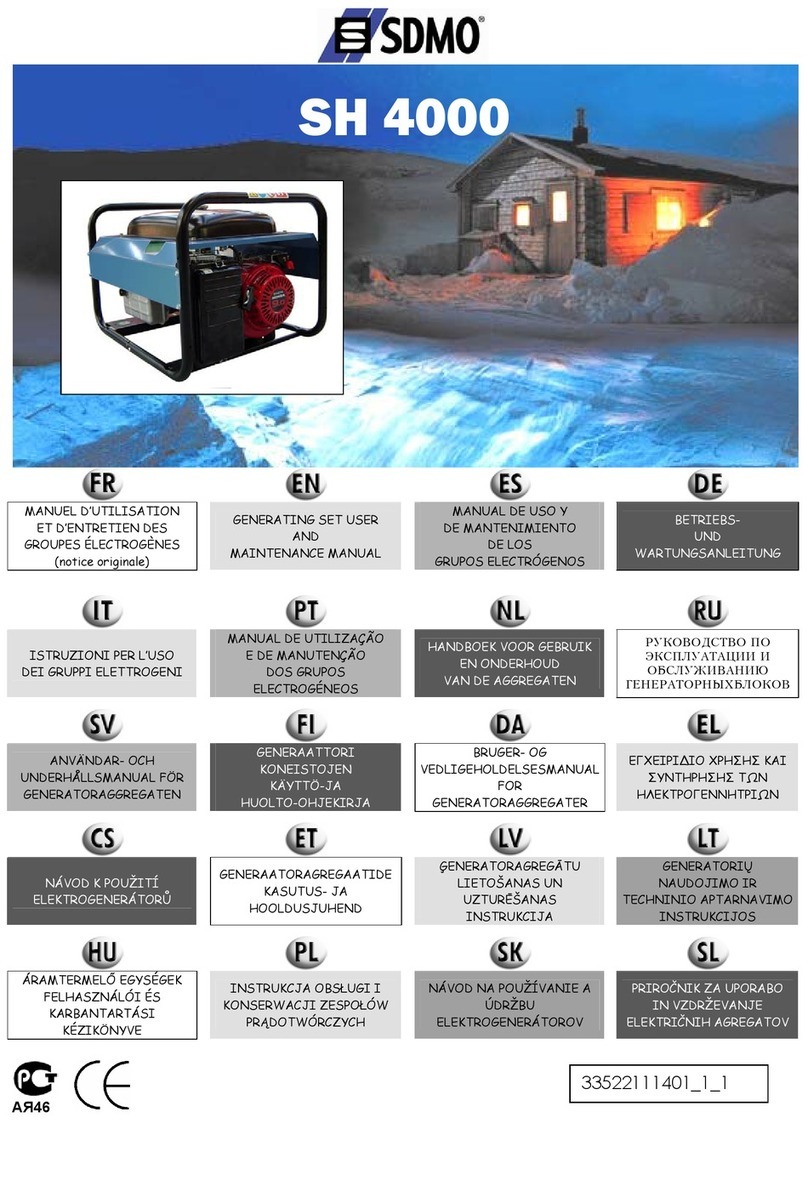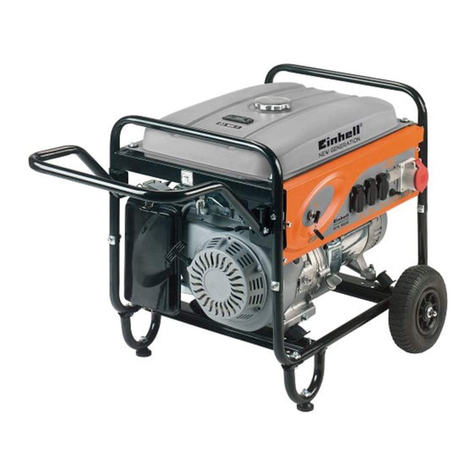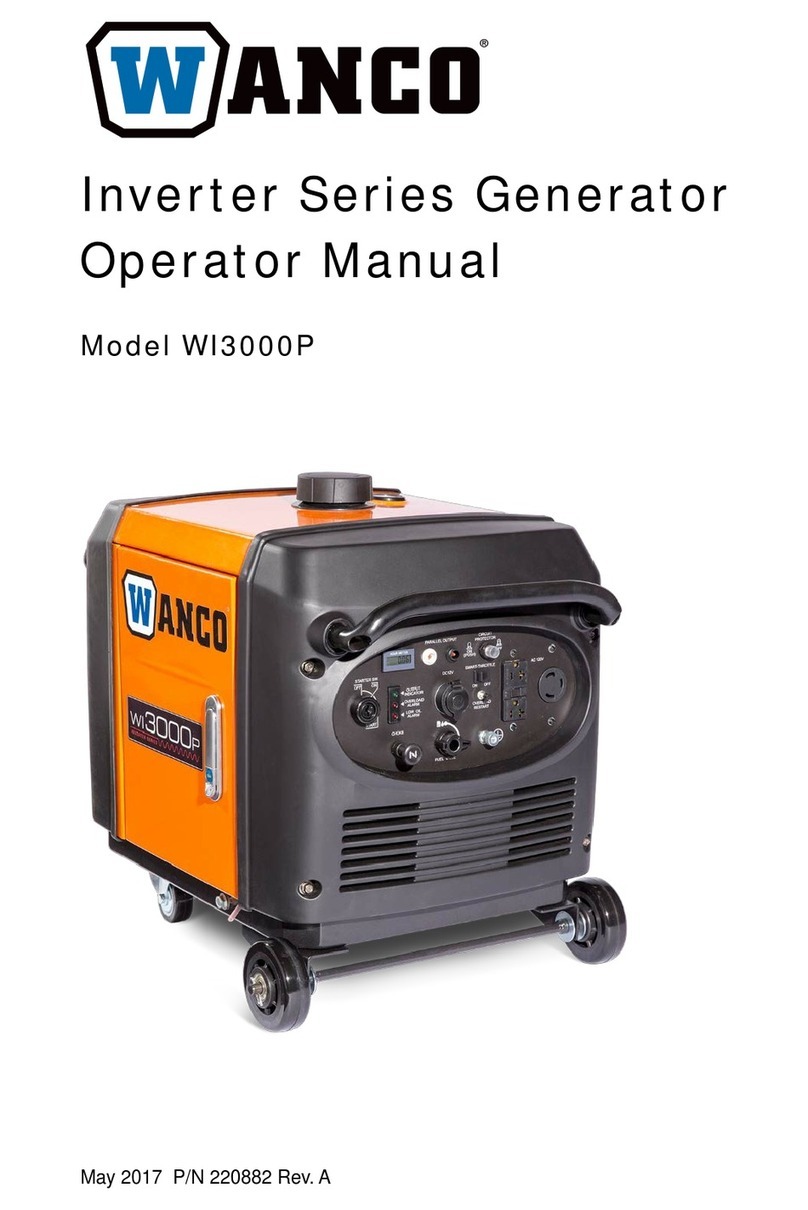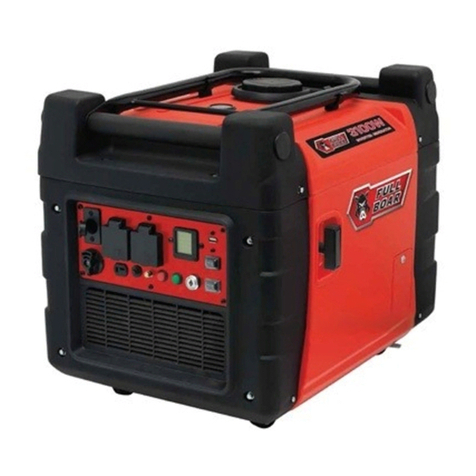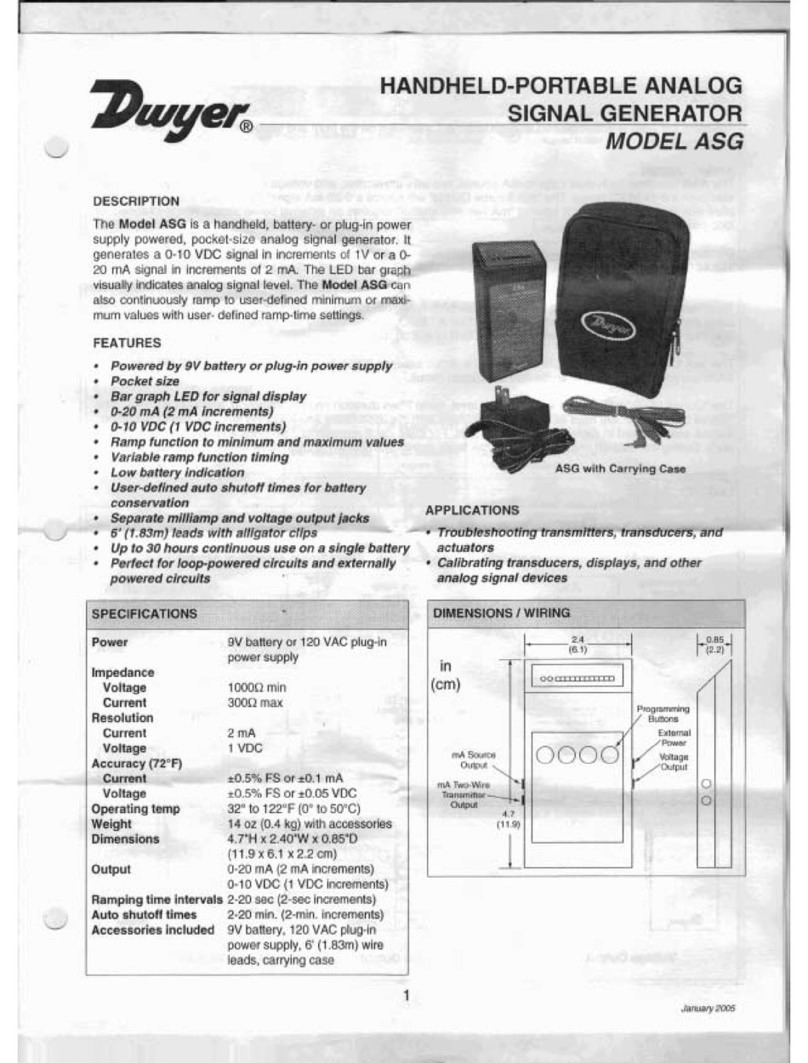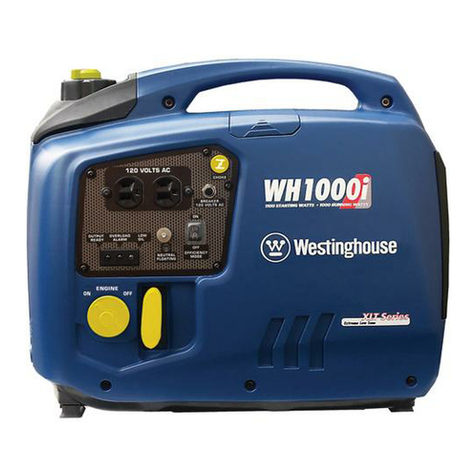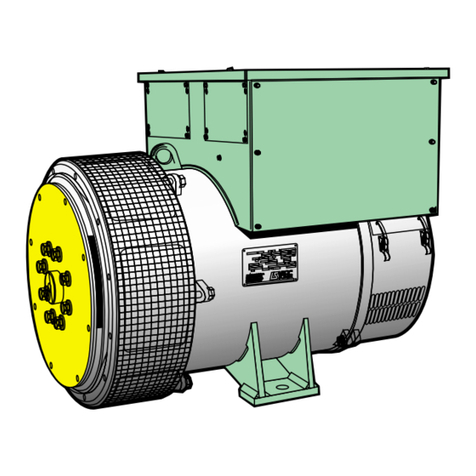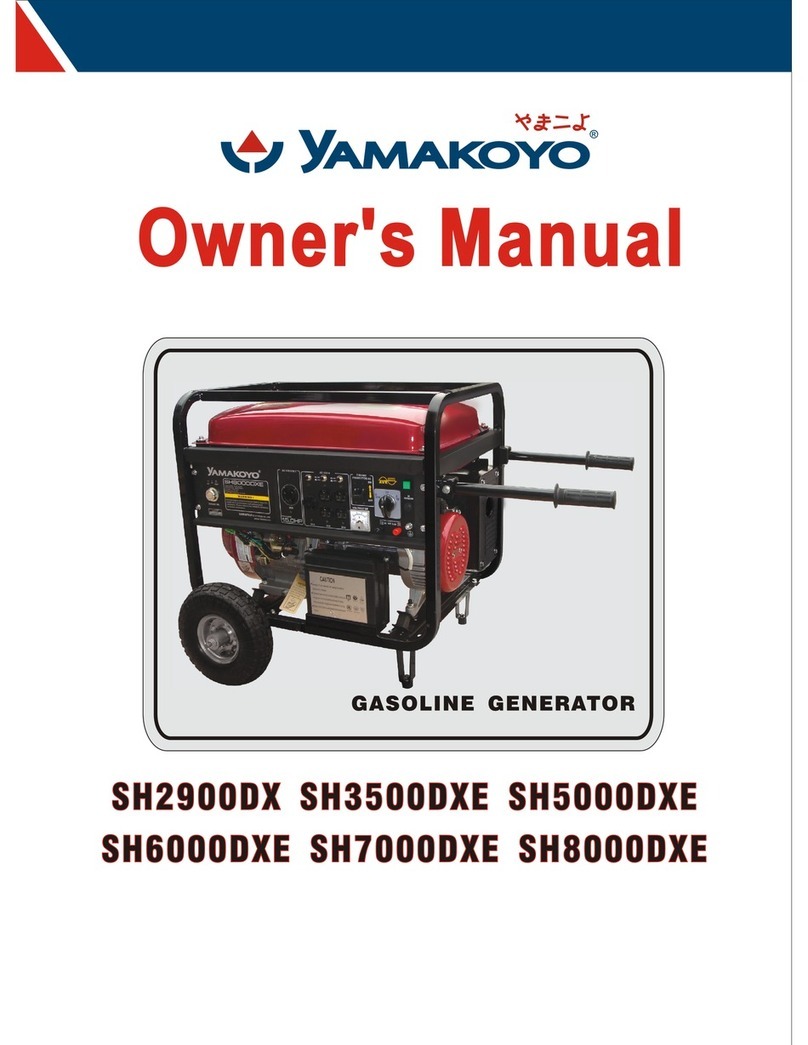•Attempting to connect to the incoming utility
service could result in electrocution.
•Restoration of electrical service while the
generator is connected to the incoming utility
could result in a fire or serious damage ifa
double throw transfer switch is not installed.
•Failure to use a double throw transfer switch
when connecting to a structure's electrical
system can damage appliances and WILL
VOID the manufacturer's warranty.
,, To connect to a structure's electrical system
in a safe manner, always have a double-
throw transfer switch installed by a qualified
electrician and in compliance with local
ordinances. (When installing a double-throw
transfer switch, a minimum of 10 gauge
wiring must be used.)
" Water CanConductelectricity! Water Which ,Operate generator in a clean, dry, Well
comes incontact with electrically charged ventilated area. Make sure,hands are dry
components can transmit electricity to before touching unitl
the frame and other surfaces; resulting in
electrical shock to anyone contacting them.
•Contact with worn or damaged extension . Inspect extension cords before use and
cords could result in electrocution, replace with new cord if required.
useof undersize e_ension c0rd(s)Could ,, use proper Size (wire gauge) extension
result in Overheating Ofthe wires 0r attached cord(s) for application; see Useof
items, resulting in fire. Extension Cords under Assembly
•Use of ungrounded extension cord(s) could , Always use an extension cord(s) having
prevent operation of circuit breakers and a grounding wire with an appropriate
result in electrical shock, grounding plug. DO NOT use an
ungrounded plug.
Accidenta! leakage 0f electrical Current Place generator Onlow ConductivitySurface
could charge conductive surfaces in contact such as a concrete slab. ALWAYS Operate
with the generat0 r generator a minimum of 6 (1.8 m) from any
conductive surface.
• Exceeding the load capacity of the
generator by attaching too many items,
or items with very high load ratings to it
could result in overheating of some items
or their attachment wiring resulting in fire
or electrical shock.
o Attempting tOuse the Unit When it Do not operate generat0r with mechanical
has been damaged or when it is not or electrical problem, Contact a DEWALT
functioning normally c0uld iesu!t in fireor fact0ry Service Center oi a DEWALT
electrocution, authorized service center.
• See Operating Heavy Loads under
Operation. Make sure that the summation
of electrical loads for all attachments does
not exceed the load rating of the generator.
• Removal of guarding could expose ,, Do not operate generator with protective
electrically charged components and guarding removed.
result in electrocution.
'Unattended 0potation of this product. Always remain in attendance With the
could result in personal injury or engine when it is operating.
property damage_To reduce the risk of
fire, do not allow the engine to operate
unattended.
_DANGER: RISK OF EXPLOSION OR FIRE
WHAT CAN HAPPEN HOWTO PREVENT IT
Spilled gasoline and it'svapors can •Shut off engine and allow it to cool before
become ignited from sparks from smoking removing cap and adding fuel to the tank.
products, electrical arcing, exhaust, flame, • Use care in filling tank to avoid spilling fuel.
gases and hot engine components such as Make sure the cap is secure and move
the muffler, unit away from fueling area before starting
engine.
, Heat will expand fue! in the tank Which ,, Keep maximum fue! !eve! be!ow the Sh0ul-
could result in spillage and possible fire ders on the debris screen to al ow for
explosionl expansionl
•Combustible materials which come • Add fuel outdoors in a well ventilated
into contact with hot generator parts area. Make sure there are no sources of
can become ignited, ignition, such as smoking products near
refueling location.
• Operate generator in a clean, dry, well
ventilated area a minimum of 48" (1.2 m)
from any building, object or wall. Do not
operate unit indoors or in any confined
area.
,, Operate generator in an open area away
from dry brush, weeds or other combus-
tible materials.
,, improperlY stored fuel Could lead to ,, Store fuel in an OSHA-approved Container,
accidental ignition. Fuel improperly secured in a Secure location away from work area.
cou!d get into the hands ofchildren or oth-
er unqualified persons.
Engine speed has been factory set to •Never attempt to "speed-up" the engine to
provide safe operation. Tampering with obtain more performance. Both the output
the engine speed adjustment could result voltage and frequency will be thrown out
in overheating of attachments and could of standard bythis practice, endangering
cause a fire. attachments and the user.
ADANGER: RISK TO BREATHING (ASPHYXIATION)
WHAT CAN HAPPEN HOWTO PREVENT iT
• Breathing exhaust fumes can cause • NEVER use an engine inside homes.
serious injury or death! Engine exhaust garages, crawlspaces, or other partly
contains high levels of carbon monoxide enclosed areas. Deadly levels of carbon
(CO), a poisonous gas you cannot see or monoxide can build up in these areas.
smell. You may be breathing CO even if Using a fan or opening windows and doors
you do not smell engine exhaust. DOES NOT supply enough fresh air.
- Only use outdoors and far away from open
windows, doors and vents. These openings
can pull inengine exhaust.
= Keepchildren, pets and others away from
area of operation.
- Always keep the exhaust pipe free of
foreign object


